Although chalk figures appear in many places throughout the world, there is one region in particular that has a wealth of them. Mighty figures of men with clubs, ogres and rampant steeds, acres in extent, and visible across great counties, decorate the hillsides in Southern England. Horses are especially abundant, with the finest of them to be found in Berkshire. This is the Uffington White Horse, located just two miles south of the tiny village of Uffington in the Berkshire Downs. It lies at the centre of a cluster of well-known landmarks thick with folkloric and literary associations, including the Neolithic barrow Wayland’s Smithy, of which much is told in Walter Scott’s Kenilworth, the pre-Roman Ridgeway, a hill fort called Uffington Castle, and the naturally flat-topped Dragon Hill, where Saint George is said to have slain the dragon. While the Uffington White Horse is a majestic creature measuring approximately 360 by 130 feet, it is not just size that makes it unique. It possesses two other traits that none of the other existing white horses have – antiquity and unique artistry. Indeed, this particular chalk figure may have served as the inspiration for all those that followed it.
The Uffington White Horse is certainly the oldest by far of all the white horses of Southern England, although exactly how old is uncertain. Mentioned in the written record for the first time during the reign of Henry II in the twelfth century, the Uffington horse pre-dates that period by hundreds of years. For a long time the folklore of the White Horse suggested a Saxon origin. One popular legend held that Alfred the Great had the horse cut to commemorate his victory over the invading Danes at Ashdown in AD 871, but there is little evidence to support this. In fact, striking similarities between the Uffington horse and representations of horses on Iron Age coins of the first century BC seem to suggest that the image goes back much farther than the ninth century. Recent work by the Oxford Archaeological Unit has indicated that the White Horse was most probably created in the Late Bronze Age, at some point between 1400 and 600 BC, much earlier than has ever previously been suggested.
The second distinguishing characteristic of the Uffington White Horse is its artistic originality. Unlike the much later Wiltshire white horses, which attempt to portray a horse more or less naturalistically, the Uffington horse is an artist’s impression of a horse, which captures the spirit and freedom of the animal rather than the mere physical details of its body. Although many consider it an incomparable work of art, the truth is that the White Horse was probably created not as an independent artistic creation but as a tribal symbol for the people who inhabited the Berkshire Downs two and a half millennia ago. It is probably not a coincidence that the horse lies adjacent to the eight-acre enclosure, Uffington Castle hillfort, which served numerous purposes in the four or five centuries preceding the Roman invasion: tribal centre and meeting place, marketplace, and refuge during war.
The other thing that makes the Uffington White Horse all but unique among such artefacts is that it has never been neglected, but has always possessed a real and active significance for the inhabitants of the immediate vicinity. The survival of the figure has relied on periodic weeding and cleaning, traditionally known as ‘scouring’, without which it would have disappeared rapidly beneath the vegetation of White Horse Hill. Accurate records of scourings emerge only in the latter half of the eighteenth century. About those who cared for it in the centuries after its creation we know almost nothing and thus the significance the White Horse and the practice of scouring held may be forever lost. This has not, however, stopped some from speculating as to these meanings. Thomas Hughes, a native of Uffington, made sure the story was known to generations of young readers by inserting the tale of Alfred, Ashdown, and the White Horse into the first chapter of his perennially popular Tom Brown’s School Days (1857).
Even then Hughes felt there was more to be said on the subject, and, having been appointed by the committee that organised the 1857 scouring festival to compile a printed memorial of the event, he produced a novel, The Scouring of the White Horse (1859). The story is told from the perspective of a young and impressionable London clerk whose life is forever altered by a holiday in the Vale at the time of the scouring. On the Hill he meets an elderly scholar who teaches him the history of Alfred and the Horse. By the end of his vacation the clerk has inevitably fallen in love with his host’s sister and, more importantly, discovered what it means to be an Englishman, which is to say, an Anglo-Saxon (on the train back to London he has a dream or vision that promises that the deeds of Alfred and his descendants will conquer Time itself). What Hughes seems to be suggesting is that the tradition of scouring the White Horse forges a reciprocal relationship between the ancient heroes who produced the figure and the modern Anglo-Saxons who reproduce it on a regular basis. The act of scouring in itself seemed to have value as an expression of English identity – even though the White Horse is much older than any conceivable historical identity.
Although the famous White Horse at Uffington is the best known and probably the oldest in England, there are nine others in different parts of the country. Six of these are found in Wiltshire, where the smooth rolling downs give special opportunity for work of this kind, the others are in the counties of Buckingham, Warwick, and York. A White Horse on Bratton Hill, near Westbury, may at least claim ancient descent, since it is the modern representative of a far older animal which occupied the site until it was substituted in 1778. A very ancient outline of a charger shows faintly on a steep green slope of the Cuckmere Valley in Sussex, but tradition is absolutely dumb as to its origin, and it has not been scoured for a long time. A steed, for once not white, but red, owing to the nature of the soil underlying the turf, existed up to the beginning of the last century opposite the village of Tysoe in Warwickshire. This figure, some five hundred years old, when it disappeared through inexcusable neglect, commemorated the charger of ‘the King Maker’, the famous Earl of Warwick. Near Weymouth there is another more recent White Horse, bearing upon its back the figure of a man in cocked hat and spurred boots. The carving adorns a hill at Osmington, overlooking the English Channel, and is intended to record the stay of George III in the neighbourhood.
There is another class of chalk figures aside from the four-footed kind, in the form of the hillside human giants, which are equally old and no less interesting. Everything indicates that these latter figures of huge, naked men were once far more numerous than at present. One or two have disappeared within the last few hundred years. Of those remaining, the Long Man of Wilmington, in Sussex, is the best known. He is two hundred and forty feet in length, and his outstretched hand holds a staff two hundred and thirty feet long. Originally his shape was cut deep into the chalk, but it has now been outlined in white stones through the efforts of local antiquarians. At Cerne Abbas, in Dorset, is a kindred giant one hundred and eighty feet in stature, whirling over his head a club one hundred and twenty feet in length, and twenty-four feet broad. Again, there is considerable debate over whether these giants are memorials to real heroes, representations of pagan deities, or something else altogether. All these figures are certainly worth a visit if you’re ever travelling through Southern England, since they are not located far apart. If you get lost, don’t hesitate to ask the local villagers for directions to their chalk figures as they’re sure to know the way – after all, they’ve lived with them for generations.








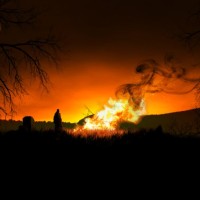
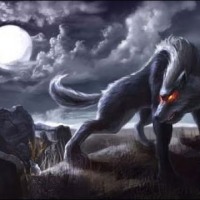
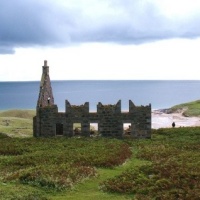

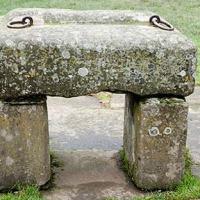
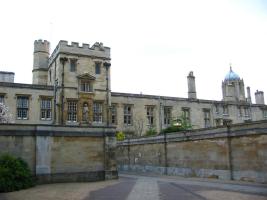


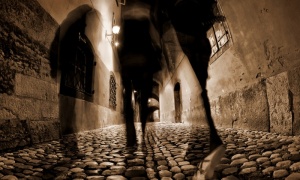


Reblogged this on Vector Charley and commented:
A good Sunday read.
Reblogged this on Robin of Rockridge's Blog.
I’ve always been fascinated by this white horse, and would love to get it into one of my “journey” books. I thought that the early Celts might have something to do with it, but now it looks like it was the indigenous tribes. Now I want to go there. The scouring is still happening! Very cool.